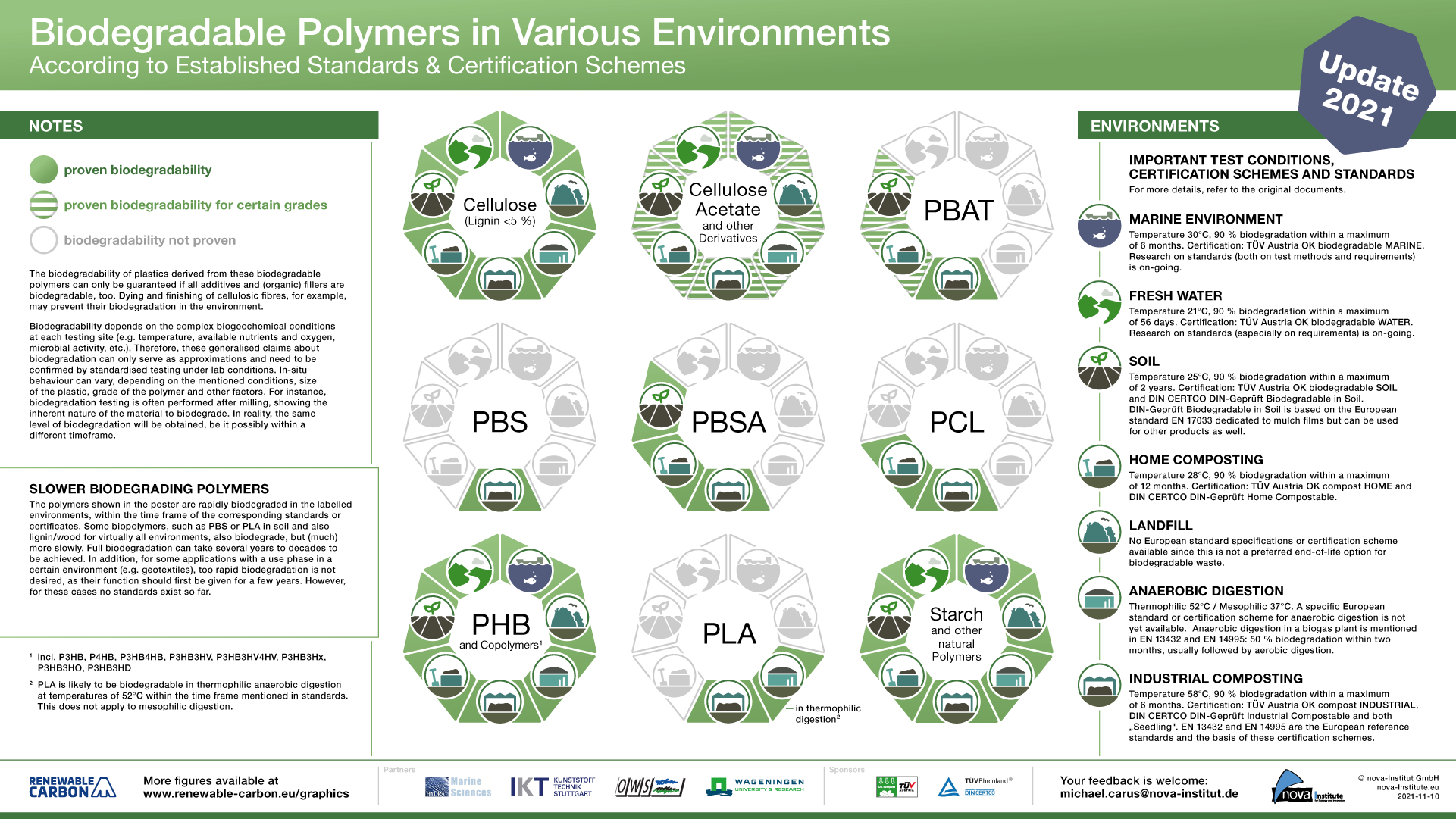The popular poster has been once again updated this autumn to depict to most up-to-date status of commercially available polymers which actually biodegrade in accordance with established standards and certification schemes. An additional partner rounds up this team of leading experts in the area of biodegradable polymers.
The biodegradation of materials is a complex process that depends mainly on the environmental conditions in which the materials end up after their use. Additionally, only a handful of polymers will be able to biodegrade in different environments. Specific standards and certificates have been developed in the last years to give a frame to declare if a product is biodegradable or not. Test methods have therefore been created and specific conditions to fulfil have been established for the biodegradability in different environments.
In this new version of the poster, a further biodegradable polyester has been added: polycaprolactone (PCL). Besides being used for the synthesis of polyurethane, PCL can be compounded with a large variety of biodegradable polymers to adjust the properties and performance of the final compound. PCL is proven to be biodegradable in industrial and home composting conditions according to the standards and certification schemes shown on the poster. Additionally, a more specific description of the biodegradation of PLA in anaerobic digestion has been added. The biodegradability of PLA grades is proven in thermophilic systems but in other digestion systems (the mesophilic ones), most PLA will not work within the required time frame or is still to be proven. Besides, the description of the test conditions, certification schemes and standards in soil has been adjusted. The European Standard EN 17033 is indeed dedicated to mulch films, but can be used for other products as well. Finally, the outlined polymers have been sorted in alphabetical order for a better clarity.
The poster has initially been developed by the nova-Institute together with a number of leading experts from the OWS (Belgium), Hydra Marine Science (Italy/ Germany), IKT Stuttgart (Germany) and in cooperation with DIN CERTCO and TÜV Austria. From now, we welcome Wageningen University & Research as a new partner on board and salute the additional expertise and know-how they provide on biodegradation. The full expert team will keep track of the latest scientific publications and certifications in the area of biodegradable polymers and continue to keep this poster at the highest up-to-date level.
The poster is freely available on https://renewable-carbon.eu/publications/product/biodegradable-polymers-in-various-environments-according-to-established-standards-and-certification-schemes-graphic-png/ in PNG format and https://renewable-carbon.eu/publications/product/biodegradable-polymers-in-various-environments-according-to-established-standards-and-certification-schemes-graphic-pdf/ in PDF format.

Source
nova-Institute, press release, 2021-12-02.
Supplier
DIN CERTCO Gesellschaft für Konformitätsbewertung
Hydra Marine Sciences GmbH
Institut für Kunststofftechnik IKT (Universität Stuttgart)
nova-Institut GmbH
Organic Waste Systems (OWS)
TÜV AUSTRIA Group
Wageningen University
Share
Renewable Carbon News – Daily Newsletter
Subscribe to our daily email newsletter – the world's leading newsletter on renewable materials and chemicals










